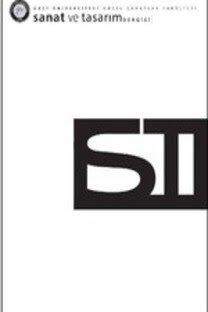400 Yıllık Gelenek: Hagi Seramikleri
Hagi seramikleri yalın formları ve yarı-saydam beyaz sırları ile Japon seramik sanatında önemli bir yere sahiptir. Hagi seramikleri 16.yüzyılın sonları-17.yüzyılın başlarında Kore’nin işgalinden sonra Japonya’ya getirilen çömlek ustalarının çalışmaları ile ortaya çıkmıştır. Dönemin feodal hükümdarları, geleneksel Japon çay törenlerine çok önem vermiş ve çay törenlerinde kullanılan çay kaplarının üretimini finanse etmişlerdir. Böylelikle 400 yıllık bir geleneğe sahip olan Hagi seramikleri, geçmişten günümüze gerek yapısal özellikleri gerekse fiziksel özellikleri açısından gelişerek değişim göstermiştir. Bu çalışmada, Hagi seramiklerinin özellikleri ve tarihsel süreç içerisindeki gelişimleri örneklerle incelenmektedir.
Anahtar Kelimeler:
Hagi-Yaki, Hagi Seramikleri, Japon Çay Seramonisi, Geleneksel
400-Years Tradition: Hagi Ceramics
Hagi ceramics, which have simple forms and semi-transparent white glaze, has an important place in the art of Japanese ceramics. At the late 16th century-the beginning of 17th Century, Hagi ceramics emerged by the ceramic masters, who were brought to Japan after the occupation of Korea. The feudal rulers of the period gave importance to the traditional Japanese tea ceremony, because of that situation they financed the production of pots and cups which were used in the ceremony. Therefore, Hagi ceramics, which have a four thousand year tradition, have changed both structural characteristics and physical properties by developing from past to present and they emerge as a special and multi-asset Japanese style which is widely used in Japanese tea ceremony. In this study, Hagi ceramics are examined with examples in terms of their material, shape, glaze and firing properties, and their development in the historical process.
Keywords:
Hagi-yaki, Hagi-wares, Japanese Tea Ceremony, Traditional Ceramic Art,
___
- Abbas, H., Bryant, T. (2002). A Shape-shifting History of Bizenware, Ceramic Technical, No:12, p.p 55-61.
- Boz, Mehmet (2009). Japon Düşünce Tarzı, Tokyo Ticaret Müşavirliği.
- Charleston,R.J. (1981). World Ceramic , England: The Hamlyn Publishing Group Limited, Astronaout House.
- Christiansen, Taylor (2010). Late-Medieval Influence of the Tea Ceremony on the Pottery of Japan, November 7
- Cort, Louise A. (2003). Isamu Noguchi and Modern Japanese Ceramics, Arthur M. Sackler Gallery, Washington: Smith- sonian Institution.
- Geleneksel Stilde Çağdaş Japon Seramikleri Sergi Katoloğu, Ajans-Türk Basın ve Basım A.Ş, 1998
- Faulkner, Rupert (1988). Japanese Studio Crafts, London: Laurence King Publishing
- Habu, J.,Hall, M.E. (1999). Jomon Pottery Production in Central Japan, Asian Perspectives, April: 38 (I).
- Hatori, Makoto (1997). A Potter's Look at Tradition, Ceramics Monthly, January, 45: 56-59.
- Hitchins, Patricia. (1976). Technical Studies on Materials from Yayoi Period Japan: Their Role in Archaeological In- terpretation, Asian Perspectives, XIX(1).
- Kitto, L., Sodeoka, K., Simpson P. (1979). The Japanese Pottery Handbook, USA: Kodansha International Ltd.
- Klein, Adelbert (1987). A Connoisseur’s Guide to Japanese Ceramics, Translated by Katherine Watson, London: Alpine
- Fine Arts Collection Ltd.
- Nakamura Oki (2002). Early Japanese Art. Translation by Martha J. McClintock. Tokyo: Kokugakuin University.
- Pilgrim Richard B.(1977). The Artistic Way and the Religio-Aesthetic Tradition in Japan. Philosophy East and West, Vol. 27, No. 3
- Stinchecum, A.M. (1988). The Where and Ware of Hagi, New York Times, p15
- ISSN: 1308-2264
- Yayın Aralığı: Yılda 2 Sayı
- Başlangıç: 2015
- Yayıncı: Ankara Hacı Bayram Veli Üniversitesi
Sayıdaki Diğer Makaleler
Etnomüzikolojide Çalgı Odaklı Çalışmalar ve Kültürel Bağlamıyla Çalgı
Çağdaş Sanat Yapıtlarının Plastik ve Mekanik Süreç Etkileşiminde Fotoğrafın Yeri
Adalet Bayramoğlu'nun Atatürk Konulu Panoları
Yaş Çamurlar Üzerinde Uygulanan Mühür Dekorları ve Çağdaş Uygulamalarından Örnekler
400 Yıllık Gelenek: Hagi Seramikleri
Son Üç Uluslararası İstanbul Bienal'inde Yapıtları Yer Alan Kadın Sanatçılardan Bir Seçki
